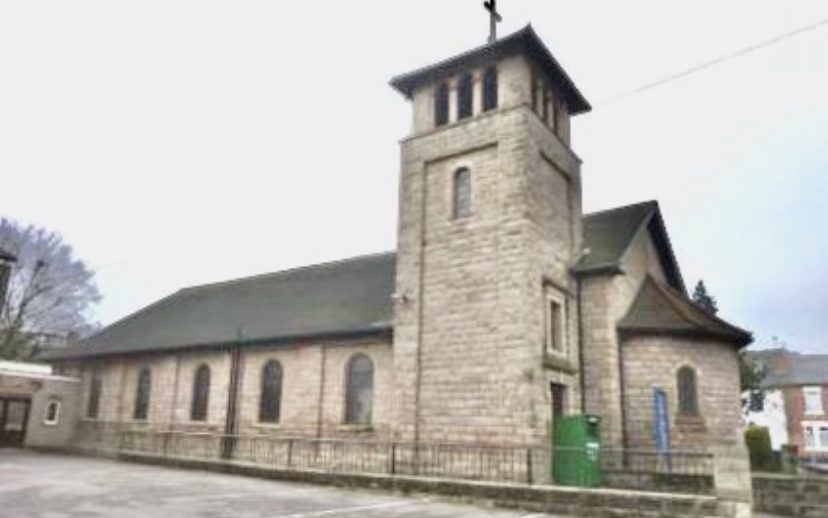
A handsome Italianate design by J.S. Brocklesby, built shortly after the end of the First World War. Structural problems meant that the church was substantially rebuilt within seven years of its opening, but the external form was little altered in the rebuilding and the campanile remains a local landmark. The church was built as a memorial to the 48 parishioners who died in the Great War.
Land was donated for the church after the First World War in an area which had seen immigration of workers to the Rolls Royce factory, established in 1907. The patron was Mr Henry Pinchbeck. Designs were prepared by J. S. Brocklesby, the foundation stone was laid by Bishop Dunn on St George’s Day, 23 April 1920, and the completed church was opened by the Bishop on December 18 in the same year (figure 1). The church was dedicated to St George and All Soldier saints; 48 parishioners had fallen in the Great War.
Sadly, structural problems became evident at an early stage and the building was deemed to be unsafe. In 1925 another architect (C.A. Edeson) was called in, and the church was substantially rebuilt in 1929. The tower and walls of Brocklesby’s church were retained, but the foundations had to be strengthened, the nave piers reinforced and a new roof built. The sacristy was enlarged at the same time.
In 1945 the church became parochial, and a Lady Chapel was created as a Second World War memorial. A reordering took place in the 1980s when the stone altar was removed. A parish hall was built on the adjacent site probably in the 1960s and a lightweight link provided between the buildings during the 1990s.
St George is built of rock-faced stone in Italianate style with simple round-arched windows. There is a southeast campanile. The interior nave arcades have square piers clad in stone and a barrel-vaulted nave, possibly of concrete construction. The windows have reveals of stone. There is some glass of fairly good standard, of interwar date, including depictions of St George and Joan of Arc (in the sanctuary and original to the church), and the Miraculous Draught and Jesus walking on water (in the narthex). A forward altar, probably introduced in the 1980s, appears to be composed of formerly separate elements, including a circular base with a relief showing the Last Supper. Furnishings are otherwise generally of simple character. The Lady Chapel, south side, has a simple arched entrance and there is an altar and statue of the Virgin within.


